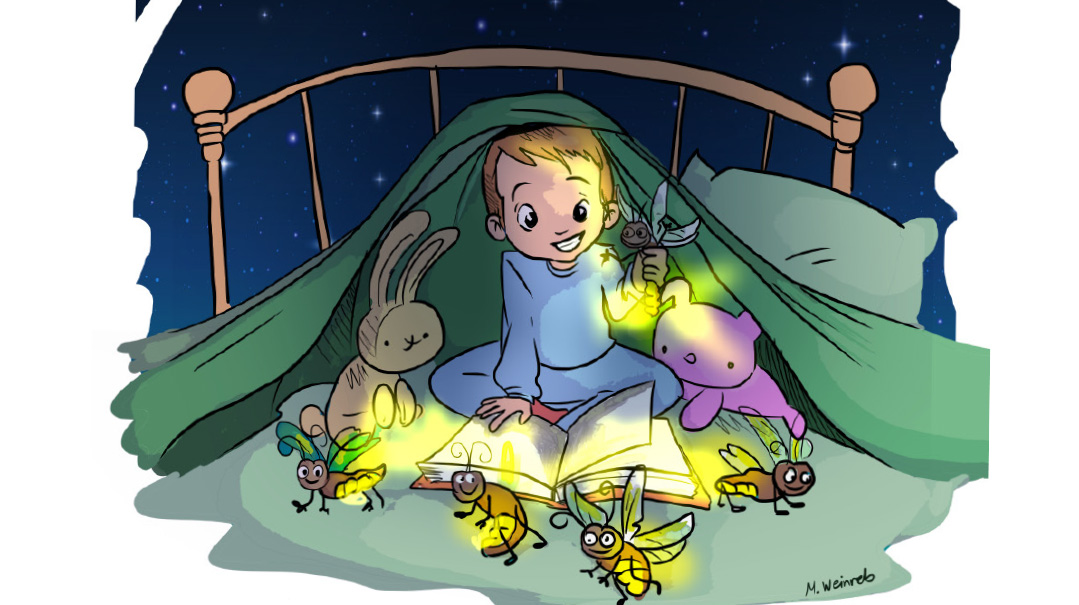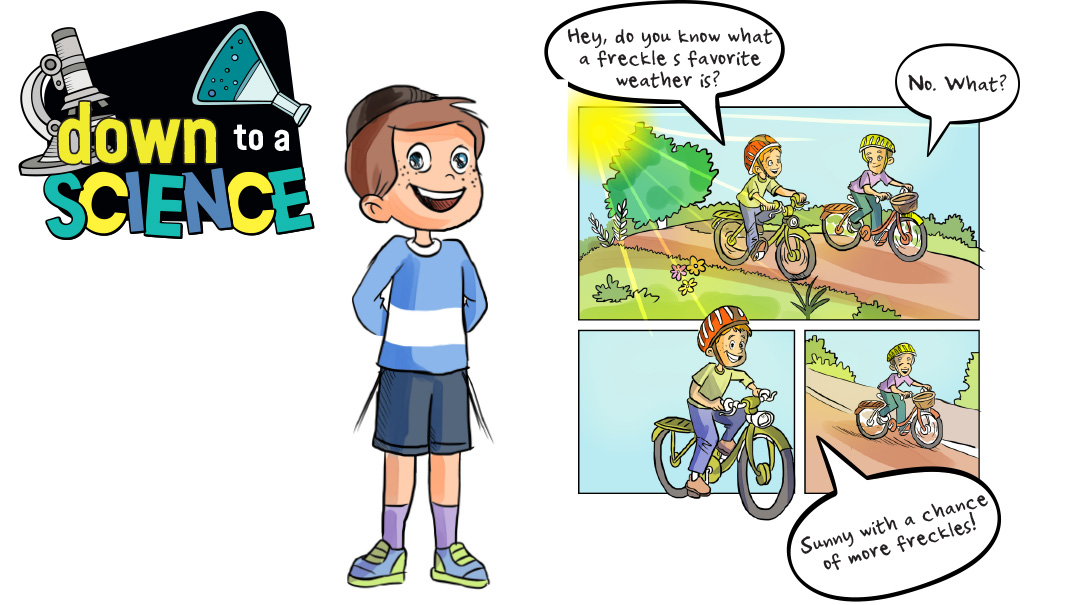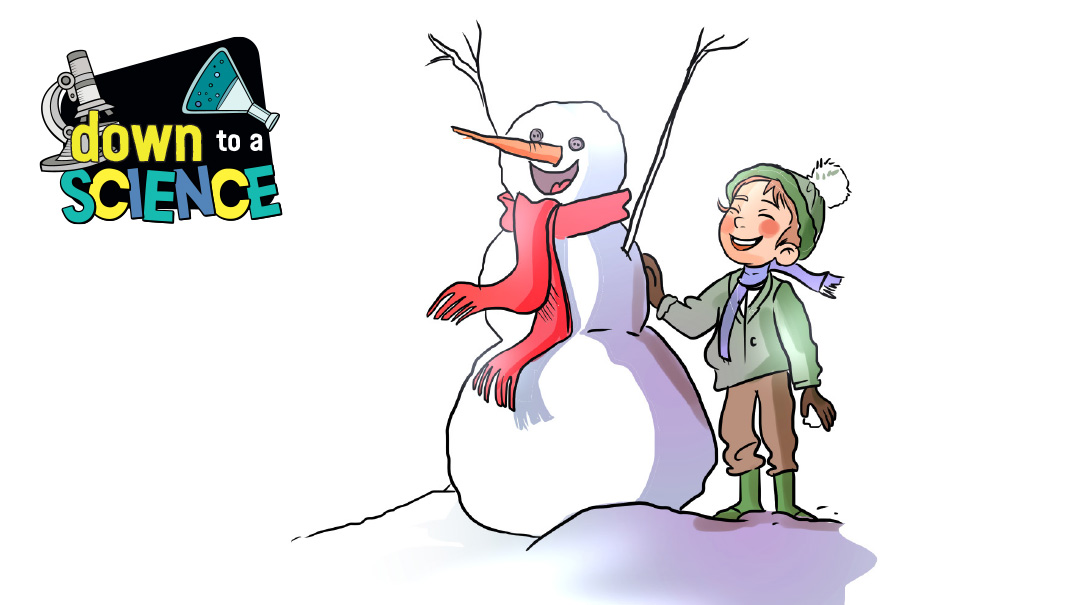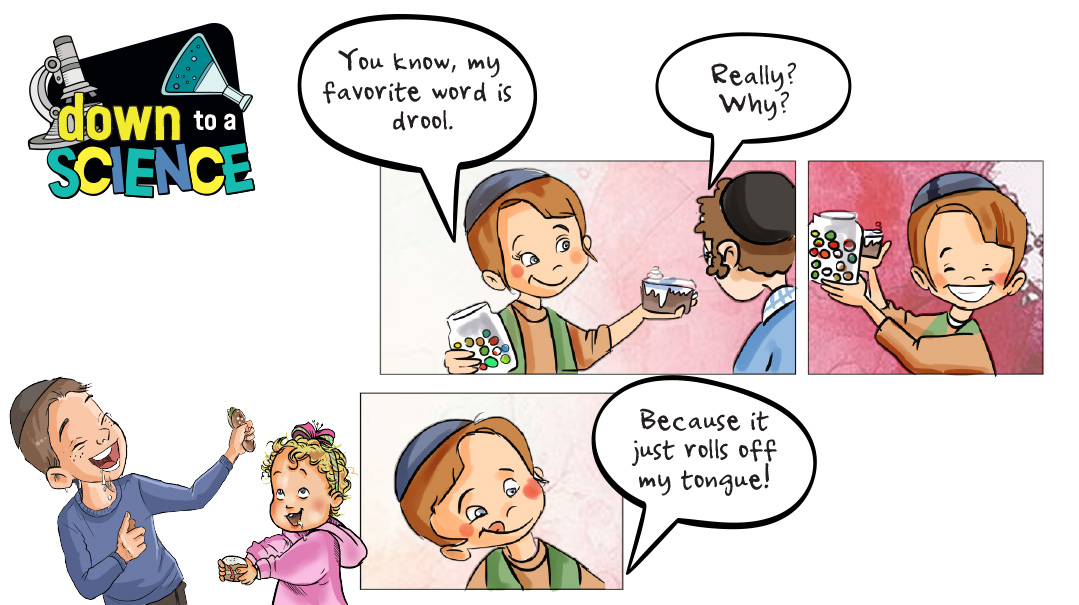Ouch! What Causes a Sunburn?

How I discovered that it’s all about UV rays

Hello, kiddos,
This is Professor Mordy Maven, Thinker, Wonderer, and Figure-Outer of all things Science-ish. What that basically means is I try really hard to figure stuff out. I do the hard work so you don’t have to!
Summer’s finally here, and I couldn’t be happier! No classes means I have more time to do my own research. After all, as much as I learn at school, I always learn a lot more on my own. Like the time I learned that the most common form of color blindness is red-green but there’s also blue-yellow color blindness, called tritanopia! And aside from all of my own experiments, I also love getting the chance to see my old summer friends. I was especially looking forward to seeing my good friend, Pinny. Or as we call him, Pale-Pale-Pinny. That guy is so pale that when his mother puts on white bed sheets she can’t even find him! So imagine my surprise when a guy claiming to be Pinny walks over to say hi to me. This guy is the same size as Pinny. His voice sounds like Pinny. The tag on the inside of his T-shirt actually says Pinny. But, but, but…. he’s bright red! And not only that, parts of his skin are peeling off. Yuck!
Something was way wrong here.
I knew that I either had to find out what happened to Pinny or let everyone in the bungalow colony know that a red- faced, peeling stranger is pretending to be him.
And that’s how I discovered that it’s all about UV rays. Let me explain.
Okay, you know what the sun is, so I’m not going to explain that. But what you might not know is that the sun actually sends energy waves to Earth. This might possibly be why I feel so much more energetic in camp than I ever do in school. Although, possibly not.
In any case, one kind of energy transmitted by the sun is infrared radiation, which is heat. This is actually the lowest amount of energy. Another kind is called visible light, which is… umm… light that is visible. (Duh!) This has more energy than infrared radiation. But the third kind, called ultraviolet light (also called UV rays) has the most energy of all. The UV rays that emit from the sun are strongest during the summer months and especially during the hours when the sun is directly overhead, which is usually between 10 a.m. and 3 p.m. We can’t see ultraviolet light, but we can certainly see what it does to our skin.
There are actually two kinds of UV radiation, called UVA and UVB, and they do different things. UVA radiation enters the lower layers of the skin and triggers cells called melanocytes. These cells then create a substance called melanin. Melanin is the brown colored shade that causes suntan. It’s also the reason why people with freckles get a lot more freckles in the summer!
When UVB radiation hits our skin, it actually burns the upper layer of the skin, causing skin cells to die. If too much UVB is absorbed, the skin gets red and painful and sometimes even swollen. That’s what we call a sunburn. And that’s what happened to Poor Pinny!
So does this mean we can’t be out in the sun without getting burned to a crisp? No more picnics? No more ballgames? We might as well be back in school!
Calm down. That’s not what I’m saying! You can stay in the sun somewhat safely if you use sunscreen. (Try saying that sentence three times fast!)
Sunscreen protects skin against sunburn by blocking UV radiation from being absorbed into the skin. You should use a sunscreen that blocks both UVA and UVB rays, with a SPF (that means Sun Protection Factor) of over 30, and is waterproof (so you don’t shvitz it right off). And make sure to use enough! Research shows that you need enough sunscreen to fill a shot glass in order to cover you properly. Also, if you borrow one of the Shabbos shot glasses to measure, make sure to wash it out before your father fills it up for Kiddush!
But even sunscreen doesn’t block the UV rays completely. So be aware of how long you’ve been outside and get out of the sun before you burn. And if you’ve already burnt, you might want to try using the gel of an aloe plant to soothe your sunburn. You can also take a cool bath, use a moisturizer, and take a pain reliever. Most importantly, stay out of the sun until your burn is healed. Aside from being painful, too much sun exposure can actually be really dangerous, causing damage to the skin’s cells that can even lead to skin cancer. No one wants that!
So basically, what I discovered after all my research is that my old camp friend is still himself. He just spent too much time absorbing UV rays and now he’s not Pale-Pale-Pinny anymore. We’re going to have to think of another nickname for him. Maybe Burnt-in-the Sunny-Punny?
Here’s some fascinating facts about suntans:
You can get a burn even when it’s cloudy. That’s because UV light can bounce off surfaces like snow, water, and concrete. It can even go through clouds. I told you these were some really powerful rays!
Melanin is produced when UV rays affect the pituitary gland. The pituitary gland is connected to the optic nerve — the nerve that lets your eyes see sunlight. Because of this, people wearing sunglasses tend to tan less!
Tanning isn’t just something that happens to people’s skin. The process of turning an animal’s skin into leather is also called tanning. During this process, the skin becomes tougher and darker. The difference between tanning people and tanning animals is that the animal has to be killed and skinned before it happens. So, it’s way better to be a tanning person.
I hope that helped solve the mystery for you, kids. And with that, I’m on to my next quest…
(Originally featured in Mishpacha Jr., Issue 919)
Oops! We could not locate your form.







